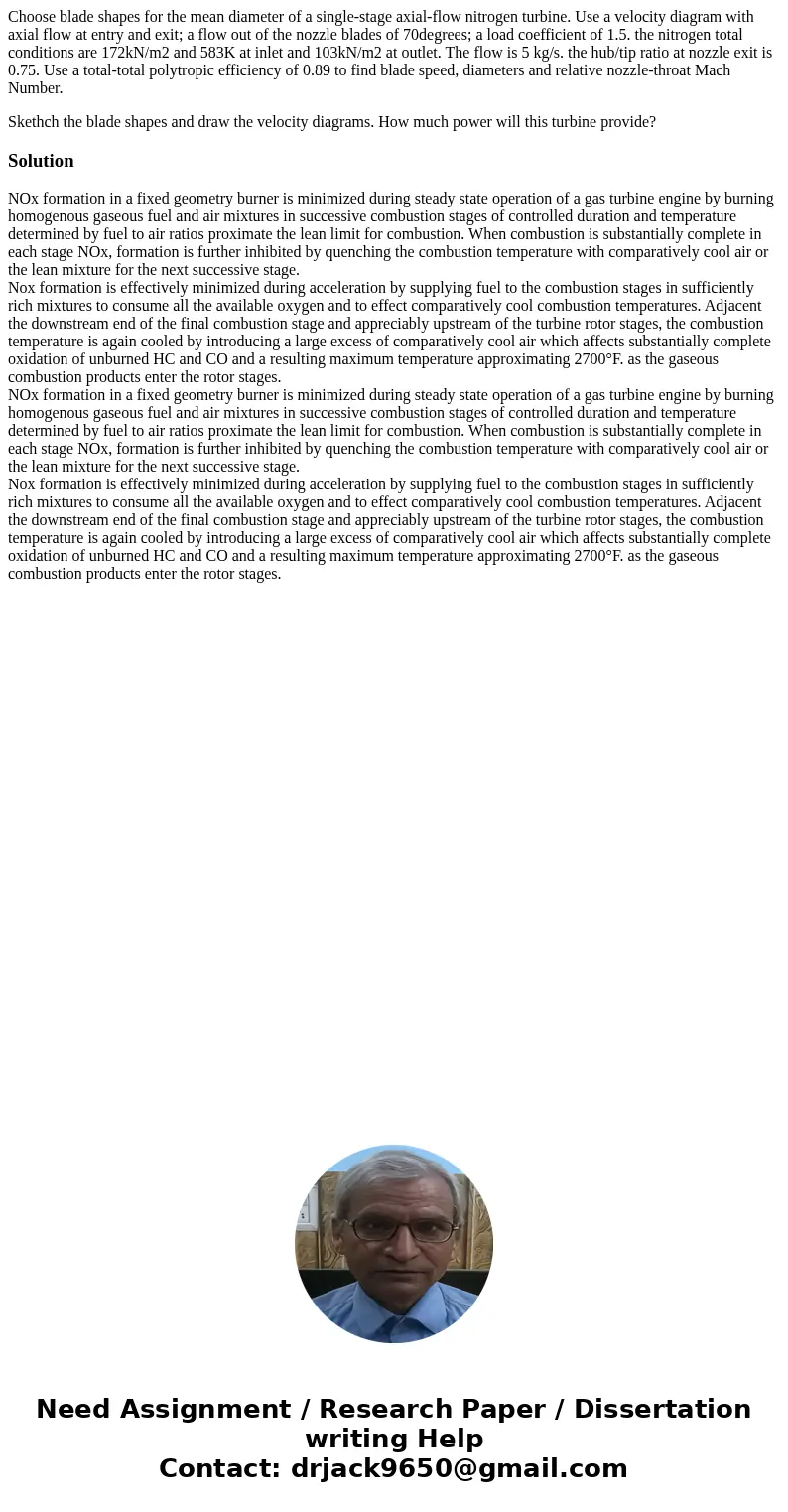Choose blade shapes for the mean diameter of a singlestage a
Choose blade shapes for the mean diameter of a single-stage axial-flow nitrogen turbine. Use a velocity diagram with axial flow at entry and exit; a flow out of the nozzle blades of 70degrees; a load coefficient of 1.5. the nitrogen total conditions are 172kN/m2 and 583K at inlet and 103kN/m2 at outlet. The flow is 5 kg/s. the hub/tip ratio at nozzle exit is 0.75. Use a total-total polytropic efficiency of 0.89 to find blade speed, diameters and relative nozzle-throat Mach Number.
Skethch the blade shapes and draw the velocity diagrams. How much power will this turbine provide?
Solution
NOx formation in a fixed geometry burner is minimized during steady state operation of a gas turbine engine by burning homogenous gaseous fuel and air mixtures in successive combustion stages of controlled duration and temperature determined by fuel to air ratios proximate the lean limit for combustion. When combustion is substantially complete in each stage NOx, formation is further inhibited by quenching the combustion temperature with comparatively cool air or the lean mixture for the next successive stage.
Nox formation is effectively minimized during acceleration by supplying fuel to the combustion stages in sufficiently rich mixtures to consume all the available oxygen and to effect comparatively cool combustion temperatures. Adjacent the downstream end of the final combustion stage and appreciably upstream of the turbine rotor stages, the combustion temperature is again cooled by introducing a large excess of comparatively cool air which affects substantially complete oxidation of unburned HC and CO and a resulting maximum temperature approximating 2700°F. as the gaseous combustion products enter the rotor stages.
NOx formation in a fixed geometry burner is minimized during steady state operation of a gas turbine engine by burning homogenous gaseous fuel and air mixtures in successive combustion stages of controlled duration and temperature determined by fuel to air ratios proximate the lean limit for combustion. When combustion is substantially complete in each stage NOx, formation is further inhibited by quenching the combustion temperature with comparatively cool air or the lean mixture for the next successive stage.
Nox formation is effectively minimized during acceleration by supplying fuel to the combustion stages in sufficiently rich mixtures to consume all the available oxygen and to effect comparatively cool combustion temperatures. Adjacent the downstream end of the final combustion stage and appreciably upstream of the turbine rotor stages, the combustion temperature is again cooled by introducing a large excess of comparatively cool air which affects substantially complete oxidation of unburned HC and CO and a resulting maximum temperature approximating 2700°F. as the gaseous combustion products enter the rotor stages.

 Homework Sourse
Homework Sourse